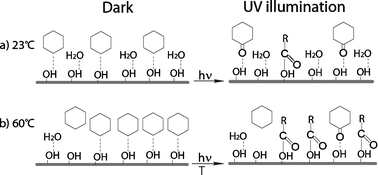Photo-catalytic oxidation of cyclohexane over TiO2: a novel interpretation of temperature dependent performance†
Abstract
The rate of

* Corresponding authors
a Catalysis Engineering, Delft University of Technology, Julianalaan 136, 2628 BL Delft, The Netherlands
b Anaproc, c/o Delft University of Technology, Julianalaan 136, 2628 BL Delft, The Netherlands
c
PhotoCatalytic Synthesis Group, IMPACT institute, University of Twente, 7500 AE Enschede, The Netherlands
E-mail:
G.Mul@utwente.nl
Fax: +31 53 4892882
Tel: +31 53 4893890
The rate of

 Please wait while we load your content...
Something went wrong. Try again?
Please wait while we load your content...
Something went wrong. Try again?
A. R. Almeida, R. Berger, J. A. Moulijn and G. Mul, Phys. Chem. Chem. Phys., 2011, 13, 1345 DOI: 10.1039/C0CP00879F
To request permission to reproduce material from this article, please go to the Copyright Clearance Center request page.
If you are an author contributing to an RSC publication, you do not need to request permission provided correct acknowledgement is given.
If you are the author of this article, you do not need to request permission to reproduce figures and diagrams provided correct acknowledgement is given. If you want to reproduce the whole article in a third-party publication (excluding your thesis/dissertation for which permission is not required) please go to the Copyright Clearance Center request page.
Read more about how to correctly acknowledge RSC content.
 Fetching data from CrossRef.
Fetching data from CrossRef.
This may take some time to load.
Loading related content
